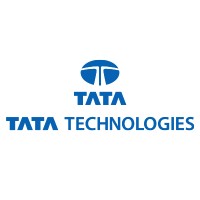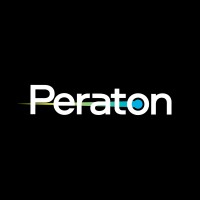
Columbia University Information Technology Company Cyber Security Posture
columbia.eduColumbia University Information Technology (CUIT) supports mission critical technology for over 40,000 faculty, staff and students. CUIT provides Columbia University students, faculty and staff with central computing and communications services including email, telephone service, web publishing, computer labs, electronic classrooms, course management and student information applications, office and administrative applications, and management of the high-speed campus ethernet and wireless networks. CUIT also manages an array of computer labs, terminal clusters, ColumbiaNet stations, multimedia classrooms, and provides a variety of technical support services. The CUIT organization is comprised of the following groups: Academic & Research Services, Enterprise Applications, Infrastructure Services, Enterprise Architecture & IT Internal Controls, Information Security, Client Support Services, IT Business Services, and the PMO. Columbia University is an equal opportunity/affirmative action – Race/Gender/Disability/Veterans employer.
CUIT Company Details
columbia-university-information-technology
201-500 employees
879
541
IT Services and IT Consulting
columbia.edu
Scan still pending
COL_2720298
In-progress
Between 900 and 1000
This score is AI-generated and less favored by cyber insurers, who prefer the TPRM score.
 CUIT Global Score
CUIT Global Score.png)

Columbia University Information Technology Company Scoring based on AI Models
| Model Name | Date | Description | Current Score Difference | Score |
|---|---|---|---|---|
| AVERAGE-Industry | 03-12-2025 | This score represents the average cybersecurity rating of companies already scanned within the same industry. It provides a benchmark to compare an individual company's security posture against its industry peers. | N/A | Between 900 and 1000 |
Columbia University Information Technology Company Cyber Security News & History
| Entity | Type | Severity | Impact | Seen | Url ID | Details | View |
|---|---|---|---|---|---|---|---|
| Columbia University | Breach | 85 | 4 | 7/2025 | COL416070325 | Link | |
Rankiteo Explanation : Attack with significant impact with customers data leaksDescription: A hacktivist with a political agenda broke into Columbia University IT systems and stole targeted student data, including details from 2.5 million applications. The hacker provided 1.6 gigabytes of data to Bloomberg News, which included information on applicants' acceptance status, citizenship, university ID numbers, and academic programs. The hacker claimed to have obtained 460 gigabytes of data, including financial aid packages, employee pay, and 1.8 million Social Security numbers belonging to employees, applicants, students, and their family members. The university has not received a ransom demand and is investigating the scope of the theft. | |||||||
Columbia University Information Technology Company Subsidiaries

Columbia University Information Technology (CUIT) supports mission critical technology for over 40,000 faculty, staff and students. CUIT provides Columbia University students, faculty and staff with central computing and communications services including email, telephone service, web publishing, computer labs, electronic classrooms, course management and student information applications, office and administrative applications, and management of the high-speed campus ethernet and wireless networks. CUIT also manages an array of computer labs, terminal clusters, ColumbiaNet stations, multimedia classrooms, and provides a variety of technical support services. The CUIT organization is comprised of the following groups: Academic & Research Services, Enterprise Applications, Infrastructure Services, Enterprise Architecture & IT Internal Controls, Information Security, Client Support Services, IT Business Services, and the PMO. Columbia University is an equal opportunity/affirmative action – Race/Gender/Disability/Veterans employer.
Access Data Using Our API

Get company history
.png)
CUIT Cyber Security News
Columbia University Applicants’ Personal Data Stolen by Hacker
The stolen data includes university-issued ID numbers, citizenship status, application decisions, and academic programs, among other things, and ...
Gaspare LoDuca named VP for information systems and technology and CIO
Gaspare LoDuca has been appointed MIT's vice president for information systems and technology (IS&T) and chief information officer, effective Aug. 18.
University IT outage resolved following dayslong disruption
As of around 11:45 a.m., Columbia affiliates were unable to log into University online platforms. These included LionMail, the University's ...
Columbia Cyberattack Appears Politically Motivated, University Says
The attacker, described as a “hacktivist,” shut down computer systems and stole student data last week.
Columbia University investigating cyber incident after tech outages
IT systems at Columbia University have been visibly disrupted for more than a day by an incident that caused the school to notify the NYPD.
Columbia CIO selected as MIT’s new tech chief
The Massachusetts Institute of Technology selected Gaspare LoDuca, CIO of Columbia University, as its new tech leader.
MIT hires Gaspare LoDuca as CIO to lead IT systems and cybersecurity | ETIH EdTech News
LoDuca will join MIT in August to lead IT strategy and oversee infrastructure, cybersecurity, and digital systems modernization.
Columbia data stolen in cyberattack that caused dayslong IT outage, University says
A hacker who caused a dayslong IT outage at the University in June stole data from Columbia's networks, the University wrote in a Tuesday ...
The Cybersecurity Stakes of the Energy Transition
Jason Bordoff: The energy transition is transforming how we power our world. Clean energy systems are becoming more interconnected, automated ...

CUIT Similar Companies

Ocado Group
We’re Ocado Group - a global, technology business redefining ecommerce, fulfilment and logistics in online grocery and distribution industries. Our cutting-edge, proprietary technology enables our partners and customers to win in their markets, develop a competitive advantage and offer an unparallel

Virtusa
Virtusa Corporation provides digital engineering and technology services to Forbes Global 2000 companies worldwide. Our Engineering First approach ensures we can execute all ideas and creatively solve pressing business challenges. With industry expertise and empowered agile teams, we prioritize exec

Tata Technologies
We're a global product engineering and digital services company focused on fulfilling our mission of helping the world drive, fly, build, and farm by enabling our customers to realize better products and deliver better experiences. We’re the strategic engineering partner businesses turn to when they

Peraton
Do the can't be done. At Peraton, we're at the forefront of delivering the next big thing every day. We're the partner of choice to help solve some of the world's most daunting challenges, delivering bold, new solutions to keep people around the world safer and more secure. How do we do it? By thi

Indra
Indra (www.indracompany.com) is one of the leading global defence, aerospace and technology companies, and a world leader in digital transformation and information technologies in Spain and Latin America through its subsidiary, Minsait. Its business model is based on a comprehensive range of proprie

Orange Business
At Orange Business, our ambition is to become the leading European Network and Digital Integrator by leveraging our proven expertise in next-generation connectivity solutions, the cloud and cybersecurity. Our 30,000 women and men are present in 65 countries, where every voice counts. Together, we

Frequently Asked Questions (FAQ) on Cybersecurity Incidents
CUIT CyberSecurity History Information
Total Incidents: According to Rankiteo, CUIT has faced 1 incidents in the past.
Incident Types: The types of cybersecurity incidents that have occurred include ['Breach'].
Total Financial Loss: The total financial loss from these incidents is estimated to be {total_financial_loss}.
Cybersecurity Posture: The company's overall cybersecurity posture is described as Columbia University Information Technology (CUIT) supports mission critical technology for over 40,000 faculty, staff and students. CUIT provides Columbia University students, faculty and staff with central computing and communications services including email, telephone service, web publishing, computer labs, electronic classrooms, course management and student information applications, office and administrative applications, and management of the high-speed campus ethernet and wireless networks. CUIT also manages an array of computer labs, terminal clusters, ColumbiaNet stations, multimedia classrooms, and provides a variety of technical support services. The CUIT organization is comprised of the following groups: Academic & Research Services, Enterprise Applications, Infrastructure Services, Enterprise Architecture & IT Internal Controls, Information Security, Client Support Services, IT Business Services, and the PMO. Columbia University is an equal opportunity/affirmative action – Race/Gender/Disability/Veterans employer..
Detection and Response: The company detects and responds to cybersecurity incidents through {description_of_detection_and_response_process}.
Incident Details
Incident 1: Ransomware Attack
Title: {Incident_Title}
Description: {Brief_description_of_the_incident}
Date Detected: {Detection_Date}
Date Publicly Disclosed: {Disclosure_Date}
Date Resolved: {Resolution_Date}
Type: {Type_of_Attack}
Attack Vector: {Attack_Vector}
Vulnerability Exploited: {Vulnerability}
Threat Actor: {Threat_Actor}
Motivation: {Motivation}
Incident 2: Data Breach
Title: {Incident_Title}
Description: {Brief_description_of_the_incident}
Date Detected: {Detection_Date}
Date Publicly Disclosed: {Disclosure_Date}
Date Resolved: {Resolution_Date}
Type: {Type_of_Attack}
Attack Vector: {Attack_Vector}
Vulnerability Exploited: {Vulnerability}
Threat Actor: {Threat_Actor}
Motivation: {Motivation}
Common Attack Types: As of now, the company has not encountered any reported incidents involving common cyberattacks.
Identification of Attack Vectors: The company identifies the attack vectors used in incidents through {description_of_identification_process}.
Impact of the Incidents
Incident 1: Ransomware Attack
Financial Loss: {Financial_Loss}
Data Compromised: {Data_Compromised}
Systems Affected: {Systems_Affected}
Downtime: {Downtime}
Operational Impact: {Operational_Impact}
Conversion Rate Impact: {Conversion_Rate_Impact}
Revenue Loss: {Revenue_Loss}
Customer Complaints: {Customer_Complaints}
Brand Reputation Impact: {Brand_Reputation_Impact}
Legal Liabilities: {Legal_Liabilities}
Identity Theft Risk: {Identity_Theft_Risk}
Payment Information Risk: {Payment_Information_Risk}
Incident 2: Data Breach
Financial Loss: {Financial_Loss}
Data Compromised: {Data_Compromised}
Systems Affected: {Systems_Affected}
Downtime: {Downtime}
Operational Impact: {Operational_Impact}
Conversion Rate Impact: {Conversion_Rate_Impact}
Revenue Loss: {Revenue_Loss}
Customer Complaints: {Customer_Complaints}
Brand Reputation Impact: {Brand_Reputation_Impact}
Legal Liabilities: {Legal_Liabilities}
Identity Theft Risk: {Identity_Theft_Risk}
Payment Information Risk: {Payment_Information_Risk}
Average Financial Loss: The average financial loss per incident is {average_financial_loss}.
Commonly Compromised Data Types: The types of data most commonly compromised in incidents are {list_of_commonly_compromised_data_types}.
Incident 1: Ransomware Attack
Entity Name: {Entity_Name}
Entity Type: {Entity_Type}
Industry: {Industry}
Location: {Location}
Size: {Size}
Customers Affected: {Customers_Affected}
Incident 2: Data Breach
Entity Name: {Entity_Name}
Entity Type: {Entity_Type}
Industry: {Industry}
Location: {Location}
Size: {Size}
Customers Affected: {Customers_Affected}
Response to the Incidents
Incident 1: Ransomware Attack
Incident Response Plan Activated: {Yes/No}
Third Party Assistance: {Yes/No}
Law Enforcement Notified: {Yes/No}
Containment Measures: {Containment_Measures}
Remediation Measures: {Remediation_Measures}
Recovery Measures: {Recovery_Measures}
Communication Strategy: {Communication_Strategy}
Adaptive Behavioral WAF: {Adaptive_Behavioral_WAF}
On-Demand Scrubbing Services: {On_Demand_Scrubbing_Services}
Network Segmentation: {Network_Segmentation}
Enhanced Monitoring: {Enhanced_Monitoring}
Incident 2: Data Breach
Incident Response Plan Activated: {Yes/No}
Third Party Assistance: {Yes/No}
Law Enforcement Notified: {Yes/No}
Containment Measures: {Containment_Measures}
Remediation Measures: {Remediation_Measures}
Recovery Measures: {Recovery_Measures}
Communication Strategy: {Communication_Strategy}
Adaptive Behavioral WAF: {Adaptive_Behavioral_WAF}
On-Demand Scrubbing Services: {On_Demand_Scrubbing_Services}
Network Segmentation: {Network_Segmentation}
Enhanced Monitoring: {Enhanced_Monitoring}
Incident Response Plan: The company's incident response plan is described as {description_of_incident_response_plan}.
Third-Party Assistance: The company involves third-party assistance in incident response through {description_of_third_party_involvement}.
Data Breach Information
Incident 2: Data Breach
Type of Data Compromised: {Type_of_Data}
Number of Records Exposed: {Number_of_Records}
Sensitivity of Data: {Sensitivity_of_Data}
Data Exfiltration: {Yes/No}
Data Encryption: {Yes/No}
File Types Exposed: {File_Types}
Personally Identifiable Information: {Yes/No}
Prevention of Data Exfiltration: The company takes the following measures to prevent data exfiltration: {description_of_prevention_measures}.
Handling of PII Incidents: The company handles incidents involving personally identifiable information (PII) through {description_of_handling_process}.
Ransomware Information
Incident 1: Ransomware Attack
Ransom Demanded: {Ransom_Amount}
Ransom Paid: {Ransom_Paid}
Ransomware Strain: {Ransomware_Strain}
Data Encryption: {Yes/No}
Data Exfiltration: {Yes/No}
Ransom Payment Policy: The company's policy on paying ransoms in ransomware incidents is described as {description_of_ransom_payment_policy}.
Data Recovery from Ransomware: The company recovers data encrypted by ransomware through {description_of_data_recovery_process}.
Regulatory Compliance
Incident 1: Ransomware Attack
Regulations Violated: {Regulations_Violated}
Fines Imposed: {Fines_Imposed}
Legal Actions: {Legal_Actions}
Regulatory Notifications: {Regulatory_Notifications}
Incident 2: Data Breach
Regulations Violated: {Regulations_Violated}
Fines Imposed: {Fines_Imposed}
Legal Actions: {Legal_Actions}
Regulatory Notifications: {Regulatory_Notifications}
Regulatory Frameworks: The company complies with the following regulatory frameworks regarding cybersecurity: {list_of_regulatory_frameworks}.
Ensuring Regulatory Compliance: The company ensures compliance with regulatory requirements through {description_of_compliance_measures}.
Lessons Learned and Recommendations
Incident 1: Ransomware Attack
Lessons Learned: {Lessons_Learned}
Incident 2: Data Breach
Lessons Learned: {Lessons_Learned}
Incident 1: Ransomware Attack
Recommendations: {Recommendations}
Incident 2: Data Breach
Recommendations: {Recommendations}
Key Lessons Learned: The key lessons learned from past incidents are {list_of_key_lessons_learned}.
Implemented Recommendations: The company has implemented the following recommendations to improve cybersecurity: {list_of_implemented_recommendations}.
References
Additional Resources: Stakeholders can find additional resources on cybersecurity best practices at {list_of_additional_resources}.
Investigation Status
Incident 1: Ransomware Attack
Investigation Status: {Investigation_Status}
Incident 2: Data Breach
Investigation Status: {Investigation_Status}
Communication of Investigation Status: The company communicates the status of incident investigations to stakeholders through {description_of_communication_process}.
Stakeholder and Customer Advisories
Incident 1: Ransomware Attack
Stakeholder Advisories: {Stakeholder_Advisories}
Customer Advisories: {Customer_Advisories}
Incident 2: Data Breach
Stakeholder Advisories: {Stakeholder_Advisories}
Customer Advisories: {Customer_Advisories}
Advisories Provided: The company provides the following advisories to stakeholders and customers following an incident: {description_of_advisories_provided}.
Initial Access Broker
Incident 1: Ransomware Attack
Entry Point: {Entry_Point}
Reconnaissance Period: {Reconnaissance_Period}
Backdoors Established: {Backdoors_Established}
High Value Targets: {High_Value_Targets}
Data Sold on Dark Web: {Yes/No}
Incident 2: Data Breach
Entry Point: {Entry_Point}
Reconnaissance Period: {Reconnaissance_Period}
Backdoors Established: {Backdoors_Established}
High Value Targets: {High_Value_Targets}
Data Sold on Dark Web: {Yes/No}
Monitoring and Mitigation of Initial Access Brokers: The company monitors and mitigates the activities of initial access brokers through {description_of_monitoring_and_mitigation_measures}.
Post-Incident Analysis
Incident 1: Ransomware Attack
Root Causes: {Root_Causes}
Corrective Actions: {Corrective_Actions}
Incident 2: Data Breach
Root Causes: {Root_Causes}
Corrective Actions: {Corrective_Actions}
Post-Incident Analysis Process: The company's process for conducting post-incident analysis is described as {description_of_post_incident_analysis_process}.
Corrective Actions Taken: The company has taken the following corrective actions based on post-incident analysis: {list_of_corrective_actions_taken}.
Additional Questions
General Information
Ransom Payment History: The company has {paid/not_paid} ransoms in the past.
Last Ransom Demanded: The amount of the last ransom demanded was {last_ransom_amount}.
Last Attacking Group: The attacking group in the last incident was {last_attacking_group}.
Incident Details
Most Recent Incident Detected: The most recent incident detected was on {most_recent_incident_detected_date}.
Most Recent Incident Publicly Disclosed: The most recent incident publicly disclosed was on {most_recent_incident_publicly_disclosed_date}.
Most Recent Incident Resolved: The most recent incident resolved was on {most_recent_incident_resolved_date}.
Impact of the Incidents
Highest Financial Loss: The highest financial loss from an incident was {highest_financial_loss}.
Most Significant Data Compromised: The most significant data compromised in an incident was {most_significant_data_compromised}.
Most Significant System Affected: The most significant system affected in an incident was {most_significant_system_affected}.
Response to the Incidents
Third-Party Assistance in Most Recent Incident: The third-party assistance involved in the most recent incident was {third_party_assistance_in_most_recent_incident}.
Containment Measures in Most Recent Incident: The containment measures taken in the most recent incident were {containment_measures_in_most_recent_incident}.
Data Breach Information
Most Sensitive Data Compromised: The most sensitive data compromised in a breach was {most_sensitive_data_compromised}.
Number of Records Exposed: The number of records exposed in the most significant breach was {number_of_records_exposed}.
Ransomware Information
Highest Ransom Demanded: The highest ransom demanded in a ransomware incident was {highest_ransom_demanded}.
Highest Ransom Paid: The highest ransom paid in a ransomware incident was {highest_ransom_paid}.
Regulatory Compliance
Highest Fine Imposed: The highest fine imposed for a regulatory violation was {highest_fine_imposed}.
Most Significant Legal Action: The most significant legal action taken for a regulatory violation was {most_significant_legal_action}.
Lessons Learned and Recommendations
Most Significant Lesson Learned: The most significant lesson learned from past incidents was {most_significant_lesson_learned}.
Most Significant Recommendation Implemented: The most significant recommendation implemented to improve cybersecurity was {most_significant_recommendation_implemented}.
References
Most Recent Source: The most recent source of information about an incident is {most_recent_source}.
Most Recent URL for Additional Resources: The most recent URL for additional resources on cybersecurity best practices is {most_recent_url}.
Investigation Status
Current Status of Most Recent Investigation: The current status of the most recent investigation is {current_status_of_most_recent_investigation}.
Stakeholder and Customer Advisories
Most Recent Stakeholder Advisory: The most recent stakeholder advisory issued was {most_recent_stakeholder_advisory}.
Most Recent Customer Advisory: The most recent customer advisory issued was {most_recent_customer_advisory}.
Initial Access Broker
Most Recent Entry Point: The most recent entry point used by an initial access broker was {most_recent_entry_point}.
Most Recent Reconnaissance Period: The most recent reconnaissance period for an incident was {most_recent_reconnaissance_period}.
Post-Incident Analysis
Most Significant Root Cause: The most significant root cause identified in post-incident analysis was {most_significant_root_cause}.
Most Significant Corrective Action: The most significant corrective action taken based on post-incident analysis was {most_significant_corrective_action}.
What Do We Measure?
















Every week, Rankiteo analyzes billions of signals to give organizations a sharper, faster view of emerging risks. With deeper, more actionable intelligence at their fingertips, security teams can outpace threat actors, respond instantly to Zero-Day attacks, and dramatically shrink their risk exposure window.
These are some of the factors we use to calculate the overall score:
Identify exposed access points, detect misconfigured SSL certificates, and uncover vulnerabilities across the network infrastructure.
Gain visibility into the software components used within an organization to detect vulnerabilities, manage risk, and ensure supply chain security.
Monitor and manage all IT assets and their configurations to ensure accurate, real-time visibility across the company's technology environment.
Leverage real-time insights on active threats, malware campaigns, and emerging vulnerabilities to proactively defend against evolving cyberattacks.




